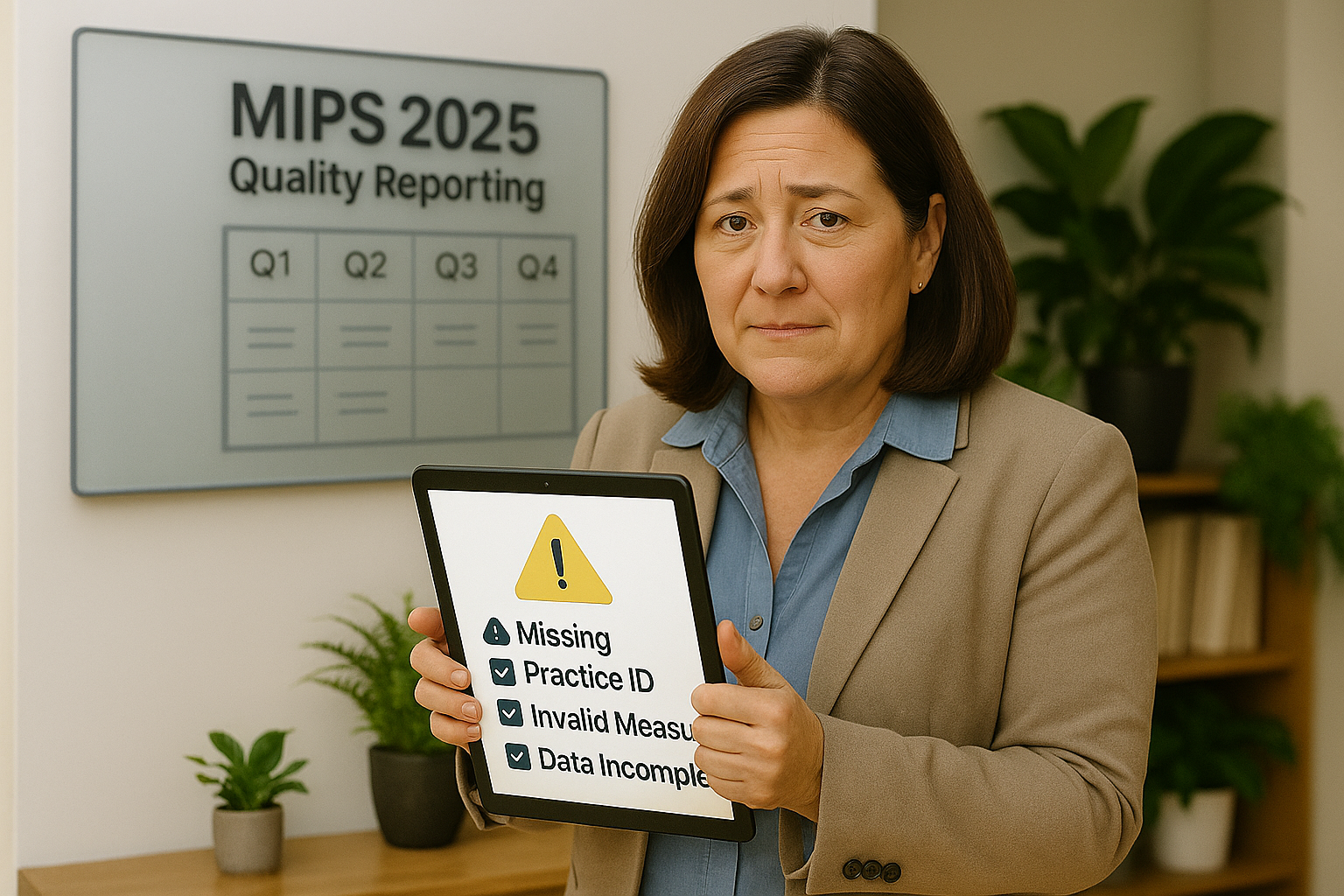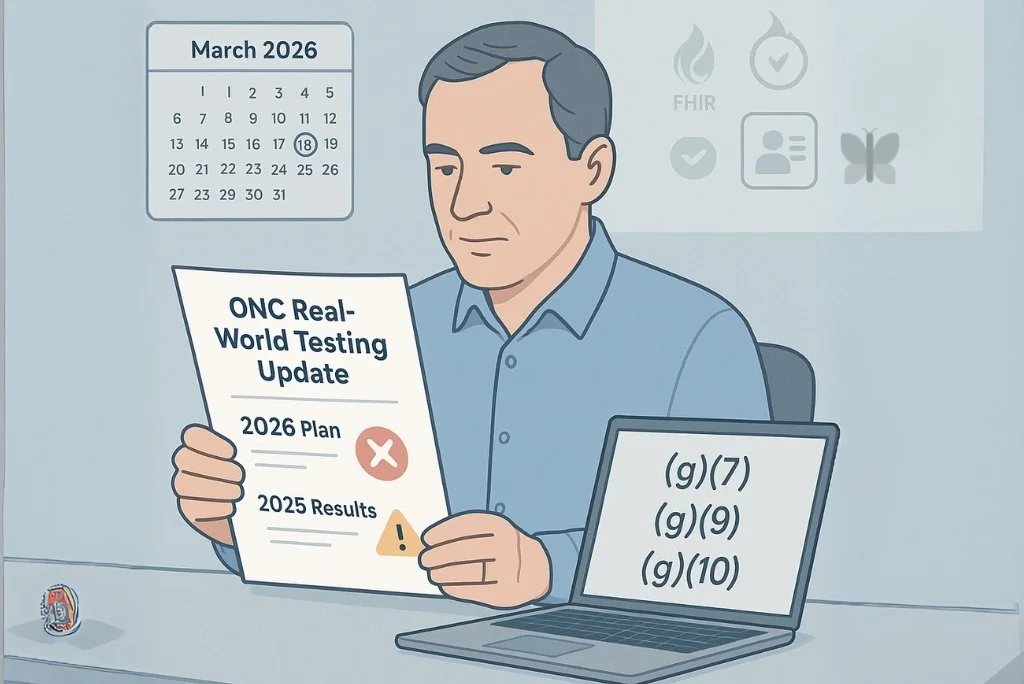Darena Health Blog and News
MIPS 2025 Audit Readiness: 10 Documents You’ll Need
CMS audits are not rare; they are expected. The MIPS 2025 Audit Readiness Blueprint guides you in staying compliant, organized, and confident with a clear checklist of 10 key items to document, track, and retain. Discover how MyMipsScore streamlines audit preparation and ensures your evidence remains secure and accessible.
Streamline Your EHR’s Path to HTI-1 Compliance and MIPS Success
Darena Health’s MyMipsScore helps EHRs meet HTI-1 certification and MIPS requirements in one step. With certified (c)(1–4) capabilities, CMS-Qualified Registry reporting, and effortless API integration, you can stay compliant, reduce engineering workload, and add new revenue opportunities for your platform.
MIPS 2025 Brings MVPs to the Forefront
MIPS 2025 is shifting to Value Pathways (MVPs), bundling quality measures, Improvement Activities, and Promoting Interoperability into specialty-focused reporting. Learn how EHRs and providers can prepare, simplify submissions, and stay compliant with Darena Health’s MyMipsScore platform.
MIPS 2025: Cost Category Insights
The MIPS 2025 Cost category is no longer low-risk. With six new cost measures, stricter exclusion rules, and 30% of your final score at stake, passive reporting is not enough. Learn how to monitor the right data, reduce surprises, and avoid penalties using smarter insights.
MIPS 2025: Improvement Activities Category
The Improvement Activities (IA) category may look simpler in 2025, but don't be fooled. CMS has removed activity weightings and tightened rules for group alignment. With fewer activities to report but higher expectations for accuracy, the margin for error is smaller than ever. This blog breaks down the new IA structure, what’s changed, and how to plan early to avoid scrambling later.
MIPS 2025: Promoting Interoperability Requirements
MIPS 2025 raises the bar for Promoting Interoperability. From stricter EHR certification rules to tighter submission requirements and fewer reweighting exemptions, providers and EHR vendors must pay closer attention. This blog breaks down what’s new, what’s expected, and how to avoid common pitfalls that could hurt your score.
MIPS 2025 - Quality Reporting is Stricter Than You Think
MIPS 2025 brings tougher rules for Quality reporting, with stricter validation, measure restrictions, and growing emphasis on MVPs. Whether you're an EHR vendor supporting clinicians or a provider submitting data, this blog breaks down the changes and what they mean for your strategy going forward.
Real-World Testing Update: What EHRs Need to Know
ONC’s June 2025 update relaxed Real-World Testing plan requirements for 2026, but many EHR developers must still submit RWT results for specific API criteria. Learn what this means, who it applies to, and how to comply with ONC Health IT certification requirements.
MIPS 2025: Key Changes
MIPS 2025 has major updates that EHRs, Healthcare Organizations, and practices can’t ignore. From new MVP pathways and cost measures to stricter data validation and changes to Improvement Activities, this blog breaks down everything you need to stay compliant and competitive. Discover how early planning, smarter strategy, and proactive monitoring can protect your scores and maximize incentives.
What 2025 MIPS Rule Means for EHRs
If your EHR still treats MIPS like a minor add-on or something your customers can handle on their own, 2025 might be the year that changes everything. In 2025 EHRs will requires annual software updates, ongoing customer education, and a deep understanding of shifting regulatory demands. Good news is, EHRs don’t have to do this alone. Solutions like MyMipsScore from Darena Health can help.
FHIR®: What’s in it for Providers?
There is a lot of buzz surrounding the concept of interoperability and FHIR®, but what do healthcare providers get out of it? We delve into a variety of benefits that providers organizations (big and small) can expect to see when they decide to adopt FHIR®.
Connecting Patients With FHIR® Based Clinical Data Registry
Read how to implement a clinical registry solution based on Microsoft Azure API for FHIR that accepts data directly from patients in a very secure yet simple way. Before a patient can share data, they need to have access to the data themselves and be able to control it. Find out how we address this issue.
FHIR® Power: A Clinical Registry with Azure API for FHIR® & Microsoft Power BI
Read how Microsoft Azure API for FHIR can be used in conjunction with Microsoft Power BI to meet scientific, clinical, and health policy, and MIPS reporting requirements for a professional association’s clinical registry.
Can MIPS on FHIR® burn QRDA and CCDA?
FHIR has gained a lot of momentum in a very short time. Learn with the help of a a simple scenario to demonstrate how FHIR could drastically reduce data entry burden for reporting the MIPS Quality Performance Category.













